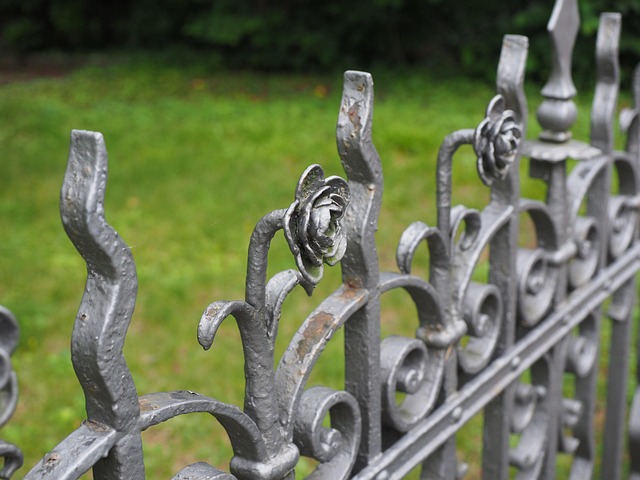In New Bedford, Massachusetts, where the climate presents distinct seasons, proper fence maintenance is essential to ensure structural integrity and aesthetic appeal. This comprehensive guide offers tailored recommendations for each season, from preparing for spring’s arrival to protecting your fence during winter’s chill. Learn about pre-spring inspections, summer care practices, fall preservation strategies, common local issues, and efficient storage techniques to keep your New Bedford property’s fence in top condition year-round.
- Understanding New Bedford's Climate for Fence Maintenance
- Pre-Spring Checklist: Preparations for a Strong Season
- Maintaining Your Fence During Summer Months
- Fall Care: Protecting Your Fence from Winter
- Common Fence Issues in New Bedford and Solutions
- Seasonal Storage Tips for Optimal Fence Preservation
Understanding New Bedford's Climate for Fence Maintenance
New Bedford, Massachusetts experiences four distinct seasons, each bringing unique weather patterns that can impact outdoor structures like fences. Understanding the local climate is crucial for effective fence maintenance throughout the year. The winter months in New Bedford are characterized by cold temperatures and frequent snowfall, which can cause wooden fences to expand, contract, and eventually rot if not properly cared for.
Spring and summer offer milder conditions but bring rain, which can contribute to moisture-related issues over time. Fallen leaves and debris from trees can also accumulate on fences during autumn, leading to potential rotting or pest infestation. Therefore, regular cleaning, inspection, and treatment are essential to ensure the longevity of fences in New Bedford’s changing climate.
Pre-Spring Checklist: Preparations for a Strong Season
Before spring arrives, homeowners in New Bedford should conduct a thorough inspection of their fences to ensure they’re ready for the upcoming season. This pre-spring checklist includes evaluating the fence’s overall condition, checking for any signs of damage or decay, and addressing structural issues. Reparing or replacing damaged sections is crucial to prevent further complications later in the year.
Additionally, it’s essential to clean the fence thoroughly to remove debris and dirt accumulated over winter. Using a pressure washer or a bristled brush can help restore its aesthetic appeal. Applying a fresh coat of paint or sealant will not only enhance its visual appearance but also protect the fence from environmental elements, ensuring a strong and durable performance throughout the spring and summer months.
Maintaining Your Fence During Summer Months
During the summer months, New Bedford’s warm weather and occasional rain can contribute to a lush landscape—but it also poses unique challenges for fence maintenance. Regular cleaning is essential to remove dirt, dust, and debris that may have accumulated over the season. A pressure washer can effectively tackle tough stains and grime on wooden fences, restoring their natural beauty. Additionally, inspecting your fence for any signs of damage caused by pests or extreme weather conditions is crucial. Repairs, such as patching or replacing rotten sections, should be addressed promptly to prevent further deterioration.
Applying a fresh coat of paint or sealant can protect your fence from the summer’s harsh elements. This step not only enhances its aesthetic appeal but also extends the lifespan of the material. Ensure that you use high-quality products suitable for outdoor use and follow manufacturer instructions carefully. Regular trimming around your fence will keep it neat and tidy, creating a well-maintained curb appeal that complements your New Bedford property.
Fall Care: Protecting Your Fence from Winter
As fall sets in, it’s crucial to prepare your fence for the winter ahead. One of the primary concerns is preventing damage from falling debris and extreme weather conditions. In New Bedford, Massachusetts, where winters can be harsh, taking proactive measures will ensure your fence remains intact and protected. Start by cleaning the fence thoroughly, removing any fallen leaves, twigs, or other debris that could trap moisture. This step is essential as it prevents rot and pest infestation.
After cleaning, apply a waterproof sealant to the fence’s surface. This barrier will shield the wood from the elements, particularly snow and ice. Consider using a high-quality, weather-resistant stain or paint to offer an extra layer of protection. Ensure the sealant is suitable for outdoor use and designed to withstand cold temperatures to maximize its effectiveness during the upcoming winter season.
Common Fence Issues in New Bedford and Solutions
In New Bedford, Massachusetts, fences often face specific challenges due to the region’s climate and local environmental factors. Common issues include rot and damage from extreme weather events like storms and heavy rainfall. The salt air from nearby coastal areas can also accelerate corrosion in metal fences. Additionally, fencing materials may be susceptible to pests such as termites or carpenter ants, which can compromise structural integrity.
To address these problems, regular maintenance is key. For wooden fences, applying a fresh coat of protective stain or sealant annually can prevent rot and water damage. Metal fences should be inspected for signs of rust and treated with corrosion-resistant paint. Repairs or replacements should be made promptly to avoid further deterioration. Regular trimming and maintenance of vegetation surrounding the fence will also help protect it from environmental damage, ensuring a longer lifespan and maintaining an aesthetically pleasing appearance.
Seasonal Storage Tips for Optimal Fence Preservation
To ensure your fence remains in top condition throughout New Bedford’s changing seasons, proper storage is key during the colder months. Begin by inspecting your fence for any damage or wear and make necessary repairs before storing it. Clean the fence with a pressure washer to remove dirt and debris, then apply a protective coating or sealant to safeguard against rust and decay.
For optimal storage, find a dry, shaded area away from direct sunlight and extreme temperatures. Disassemble the fence if possible, wrapping individual sections carefully in plastic sheeting or tarps for protection. Secure them with ropes or bungee cords, ensuring they’re stable during transport or storage. Store these components in a sturdy shed, garage, or dedicated outdoor storage unit to prevent damage from snow, ice, or strong winds.
